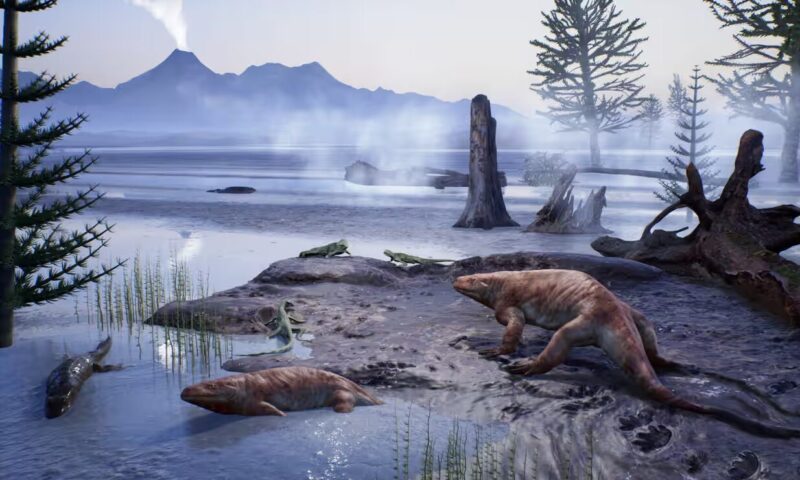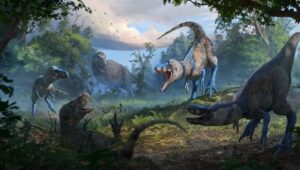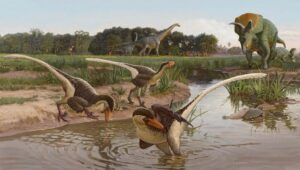Claudia Steffensen was hiking in the Italian Alps in 2023 when something caught her eye. She stepped on a rock with a footprint embedded in it. Little did she know she had just uncovered a 280-million-year-old ecosystem.
“[The] rock struck me as odd, as it seemed more like a slab of cement,” Steffensen told The Guardian. “I then noticed these strange circular designs with wavy lines. I took a closer look and realized they were footprints.”
Unsure what she was looking at, Steffensen sent a photo to a nature photographer friend, who passed it on to paleontologist Cristiano Dal Sasso. He then invited more experts to examine the image, and a research project unfolded.
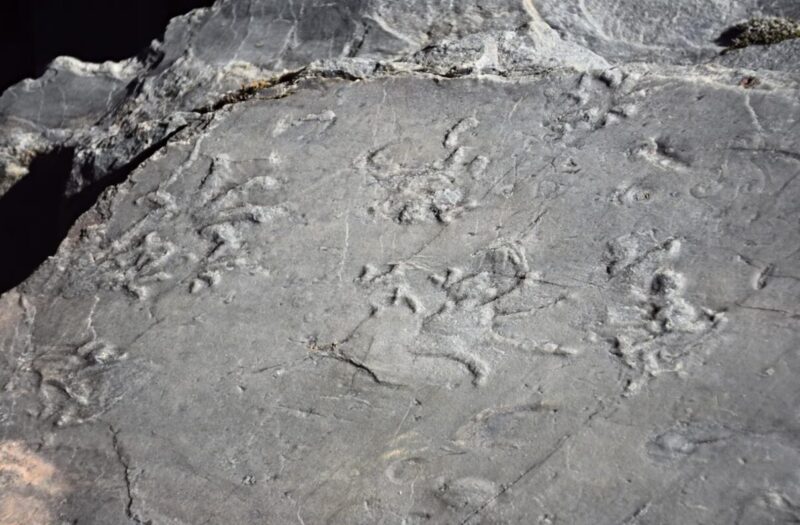
Photo: Elio Della Ferrera/Superintendence of Archaeology, Fine Arts and Landscape of the provinces of Como, Lecco, Monza-Brianza, Pavia, Sondrio, and Varese.
Rock Zero
Since the discovery of “Rock Zero” in 2023, researchers have found a treasure trove of fossilized tracks in these Valtellina Orobie mountains. The initial print that Steffensen stumbled upon belonged to a prehistoric reptile. In this Permian era before the dinosaurs, all the prints they uncovered belonged to insects, arthropods, amphibians, and reptiles. Some of the creatures were two to three meters long.
“The imprinted steps happened when the sandstones and clays were still soaked in water,” said researcher Ausonio Ronchi.
The summer sun dried those surfaces and hardened them to the point that more water did not erase the prints. On the contrary, it covered them with new clay, forming a protective layer.
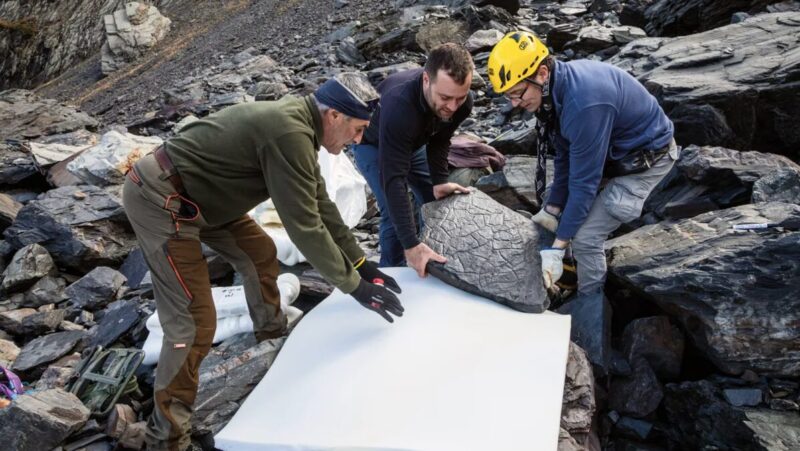
Photo: Elio Della Ferrera/Superintendence of Archaeology, Fine Arts and Landscape of the provinces of Como, Lecco, Monza-Brianza, Pavia, Sondrio, and Varese.
The team has also uncovered many fossilized seed and plant fragments, trails from long tails dragging over the ground, and even the imprints of raindrops.
“The very fine grain of the sediments, now petrified, has allowed the preservation of impressive details, such as the imprints of the fingertips and the belly skin of some animals,” sedimentology specialist Lorenzo Marchetti said in a statement.
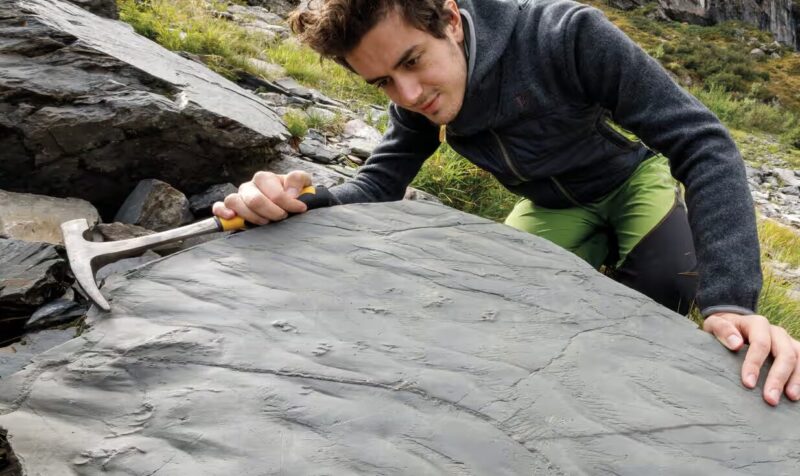
Photo: Elio Della Ferrera/Superintendence of Archaeology, Fine Arts and Landscape of the provinces of Como, Lecco, Monza-Brianza, Pavia, Sondrio, and Varese.
A warning
Drones are now mapping fossils on cliff faces, and helicopters are airlifting boulders and rocks out of unstable areas. Rock Zero was the first to be carted away for analysis in October.
For millennia, ice and snow covered this hidden world. Only recently have rising temperatures exposed it to view. In that sense, this window into an ancient ecosystem is also a warning. The Permian was a time of rapid global warming — “completely similar to that of today,” the team commented. It ended with the mass extinction of 90% of all species.
